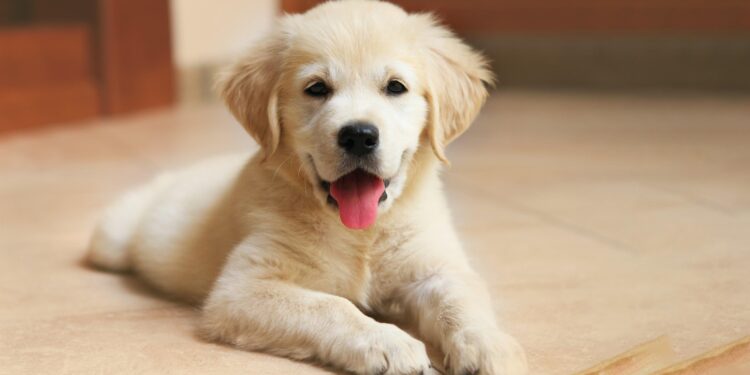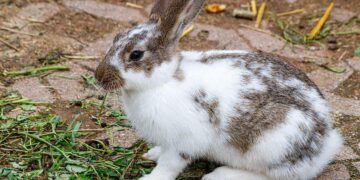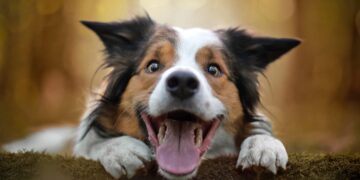Table of Contents
The air on that first training day was thick with promise.
I remember the smell of freshly cut grass, the satisfying snap of a new leash in my hand, and the bright, eager eyes of my dog, Max, a border collie mix with a mind as sharp as his movements.
We were going to conquer the world of dog agility.
I had the books, the gear, the boundless optimism of a dedicated owner ready to forge an unbreakable bond through sport.1
But that’s not what happened.
Our heartbreaking failure didn’t come in a single, dramatic moment.
It was a slow, creeping silence.
Despite following all the “standard advice”—luring with toys, focusing on performance, pushing through what I thought was just stubbornness—our communication crumbled.
The joy drained away, replaced by a tense, frustrating quiet.
The breaking point came during a class.
Max, who once vibrated with excitement at the sight of the A-frame, simply stopped.
He sat down mid-course, turned his head away, and refused to move.
He wasn’t being defiant; he had shut down completely.3
That silence was the loudest sound I’d ever heard.
It was the sound of a partnership breaking, of a joy extinguished.
It forced me to question everything I thought I knew.
I had been trying to teach my dog to follow a pre-written score, a rigid set of instructions.
But what if that was the wrong approach entirely? What if the real art of agility isn’t about flawlessly executing a script, but about learning how to improvise together? What if it’s more like a conversation, a duet without words?
Part 1: The “Sheet Music” Trap – Why Conventional Agility Training Fails So Many Teams
My failure with Max wasn’t unique.
I soon discovered that our experience was a textbook case of a systemic problem in many corners of the dog training world: the “performance-first” mindset.
This approach, which prioritizes completing the obstacle over the dog’s emotional state, is the root cause of countless training breakdowns.
It creates a high-pressure environment where the focus is on avoiding errors rather than building connection, leading directly to anxiety, fear, and shutdown in dogs.3
The common problems you read about on agility forums—a dog that suddenly starts sniffing the ground, running off to visit other dogs, knocking bars, or creeping slowly over the contacts—are not acts of a “naughty” or “stubborn” dog.4
They are desperate communications.
A dog sniffing the ground is often trying to de-stress.
A dog running off is trying to escape a situation that has become too overwhelming.
These are not signs of disobedience; they are the predictable outcomes of a training system that has ignored the dog’s psychological well-being.
This flawed system creates a toxic feedback loop.
The pressure to perform makes the handler anxious.
I remember the feeling all too well: the hot flush of embarrassment when Max would break his start line, the frustration when he’d pop out of the weave poles, the feeling of being judged by other handlers in the class.6
That anxiety is a powerful force that travels right down the leash, and our dogs are masters at reading it.
My stress became Max’s stress.
His resulting “problem behaviors” then amplified my anxiety, and the cycle spiraled downward.
Even well-intentioned “just-for-fun” agility can fall into this trap.
The idea that a dog will just “get used to” a wobbly teeter or a dark tunnel is a dangerous myth.3
Without a foundation of confidence and clarity, where each step is broken down into a joyful, successful experience, even playful sessions can become psychologically damaging.
They can erode the dog’s trust in you and create lasting fears of the very equipment you hope they will love.3
We were stuck trying to play sheet music, but neither of us could read the notes, and the result was a painful cacophony.
Part 2: The Epiphany – Discovering the Jazz of Agility
After my rock-bottom moment with Max, I took a break.
I put the agility gear away and tried to just reconnect with my dog.
One evening, I stumbled upon a documentary about jazz musicians.
I was captivated.
They talked about spending years mastering the fundamentals—scales, chords, timing—but then, on stage, they would “let go.” They weren’t just playing notes; they were having a conversation.
They were listening, responding, and creating something new in the moment, together.
It was a lightning bolt.
This was the language I had been missing.
It wasn’t about a rigid script; it was about a responsive, creative jam session.
This gave me a completely new paradigm for understanding the handler-dog relationship.
This “Jazz Improvisation” model became my new framework, a superior way to think about agility that prioritizes connection and creativity over compliance.
- Fundamentals as Scales & Chords: A jazz musician can’t improvise without first mastering the building blocks of music. For an agility team, this means mastering the fundamentals. This isn’t just about the obstacles themselves, but about foundational skills like body awareness, impulse control, and basic obedience commands like “sit” and “stay”.7 This is the non-negotiable groundwork. Without it, there can be no music.
- Training as a Jam Session: This is where the magic starts. Instead of rote, repetitive drills (“playing sheet music”), practice becomes a creative and joyful “jam session.” The goal is to experiment, to play, to communicate, and to build a shared, non-verbal language of movement and cues.11 You might try a sequence in a new order, reward a creative solution to a handling challenge, or simply celebrate a moment of joyful connection. The focus is on the
process of making music together, not just the final performance. - Performance as a Duet in “Flow”: The ultimate goal is not a perfect score or a blue ribbon, but to achieve a “flow state” on the course. Flow, a concept identified by psychologist Mihaly Csikszentmihalyi, is a state of deep, effortless immersion where you are so involved in an activity that nothing else seems to matter.13 For an agility team, this is the moment the handler and dog move as one, a seamless duet where the “thinking” stops and the “doing” becomes intuitive, responsive, and exhilarating.15
This shift in mindset changes everything.
It reframes the entire relationship from one of a commander and subordinate to one of collaborative artists.
| Feature | “Sheet Music” Mindset (The Old Way) | “Jazz Jam” Mindset (The New Way) |
| Primary Goal | Flawless performance; avoiding errors. | Joyful connection; creative problem-solving. |
| Handler’s Role | Commander; Drill Sergeant. | Bandleader; Duet Partner. |
| Dog’s Role | Obedient subordinate. | Creative collaborator. |
| View of Errors | Failures to be punished or corrected. | Information; opportunities to communicate better. |
| Measure of Success | Score, time, ribbons. | Confidence, enthusiasm, “flow.” |
| Core Analogy | Following a rigid script. | Having a spontaneous conversation. |
Part 3: The New Paradigm – Building Your Agility Duet
Adopting the “Jazz Jam” mindset requires a new approach to every aspect of agility.
It starts with the tools you use, moves to how you practice, and culminates in how you perform together.
Pillar I: Choosing Your Instruments – A Musician’s Guide to Agility Gear
You can’t make good music with a broken instrument.
In agility, our “instruments” are the obstacles themselves.
Their quality, safety, and appropriateness directly impact the learning process and the confidence of our canine partner.
The Rhythm Section (Foundational Gear)
These are the core instruments every team needs to learn the basics.
- Jumps: The most fundamental “note” in agility. You’ll encounter bar jumps, panel jumps, and tire jumps. For beginners, the two most critical features are adjustable heights and displacement safety. The jump bar must be able to fall away easily if your dog hits it; a fixed bar is a recipe for injury and fear.16 Most modern practice jumps are made from lightweight, furniture-grade PVC for this reason.17
- Tunnels: The ultimate confidence-builders. A regulation open tunnel is typically 18-20 feet long with a 24-inch opening.17 For a dog, running into a dark tube is an act of faith. That faith is shattered if the tunnel rolls or moves. Proper anchoring with heavy-duty sandbags is non-negotiable for safety and confidence.16
- Weave Poles: The most technically demanding “riff.” A dog weaving at full speed is a beautiful sight, but it’s a complex skill that puts stress on their spine and joints.20 Standard competition spacing is 24 inches between poles.16 It’s best for beginners to start with a set of just six poles and use modern training methods like the “2×2” or “channel weave” method to build the skill piece by piece.17
The Horn Section (Advanced Instruments)
These are the big, impressive pieces that require significant confidence and foundational work.
Obstacles like the A-Frame, Teeter-Totter (or Seesaw), and Dog Walk are known as “contact obstacles” because the dog must touch a designated colored zone at the up and down ramps.
The single most important safety feature on these is a non-slip surface.
A dog slipping on a wet or slick surface can lead to serious injury and a permanent loss of confidence.16
High-quality equipment uses rubberized coatings or paint mixed with sand for grip.
The Home Studio (DIY & Setup)
The beauty of the “jam session” approach is that you don’t need a professional recording studio to practice.
You can build a safe, effective “home studio” in your backyard to work on the fundamentals.
The most important consideration is a safe surface—level grass or packed dirt is ideal—with enough space for your dog to run safely.16
With a few simple materials, you can build your own instruments and start playing.
| Instrument | Common Materials | Simple Build Steps | Key Safety Tip |
| Practice Jump | PVC pipes, broomstick, flowerpots, laundry baskets. | 1. Place two pots/baskets as uprights. 2. Rest a broomstick or PVC pipe across them. | The jump bar MUST be able to fall off easily if hit. Never fix it in place.16 |
| Weave Poles | PVC pipes, garden stakes, orange cones, screwdrivers. | 1. Stick 6 garden stakes or large screwdrivers into the ground in a straight line, 24 inches apart. 2. Slide PVC pipes over them. | Ensure poles are spaced correctly (24″) to prevent spinal strain from overly tight turns.21 |
| Beginner Tunnel | Children’s pop-up play tunnel, cardboard boxes, chairs & a blanket. | 1. Use a collapsible child’s play tunnel. 2. Alternatively, line up several large, open cardboard boxes. 3. Or, drape a blanket over a row of chairs. | Start with a short, straight tunnel so the dog can always see the exit. Anchor it so it doesn’t roll and scare the dog.7 |
| Contact Plank | Wide wooden plank, small log or pool noodle, sand/paint. | 1. Lay a wide plank on the ground. 2. To introduce movement, place a pool noodle or small log under the center to create a simple wobble board/teeter. | The surface must be non-slip. Mix sand with exterior paint for grip. Start with the plank flat on the ground.23 |
Pillar II: Learning the Language – From Rote Drills to Creative Games
Repetitive, high-pressure drills are the enemy of creativity and joy.
They teach a dog that training is a chore, something to be endured rather than enjoyed.
This is where the concept of gamification comes in.
As the handler, your new role is not drill sergeant, but game designer.
Your job is to create short, fun, low-pressure activities that teach specific skills without the dog ever feeling like they’re being “drilled”.27
The principles of modern, positive dog training are functionally identical to those of effective game design.
Both disciplines aim to create a state of voluntary, joyful engagement.
A good training game has a clear and simple goal, a high rate of reinforcement so the dog feels successful, and taps into the dog’s intrinsic motivation—their natural love of chasing, searching, and problem-solving.29
Crucially, it gives the dog a sense of agency, making them feel like an active participant who has some control over the outcome.32
Here are a few foundational games to start your repertoire:
- The Target Touch Tango: This is a cornerstone skill. Teach your dog to touch a target (your hand, a plastic lid, a sticky note) with their nose or paw. Once they understand the game, you can place the target anywhere—on the ground, on an obstacle—to guide their movement without luring.8 This is the foundation for sending your dog to obstacles and teaching contact zone performance.
- The Cone Wrap Riff: Place a single cone (or any object, like a laundry basket) on the ground. The game is to send your dog out and around the cone. This teaches them to work away from you and practice the tight turns needed on a course. Start close, and gradually increase the distance.8
- The 2×2 Weave Warm-up: This game uses just two weave poles set up in a line. The goal is simply for the dog to enter between the two poles. This isolates and heavily reinforces the most difficult part of weaving—the entry—in a simple, fun, and rewarding way.22
- Tunnel Dash Boogie: With a short, open tunnel, simply make it a fun game to run through it. Toss a toy through, run through it with your dog, and celebrate wildly at the other end. The only goal is to build speed, drive, and an intense love for the tunnel obstacle.21
By breaking down complex skills into these simple, joyful games, you remove the pressure that causes anxiety and shutdown.
You are building a shared language, one “riff” at a time.
Pillar III: Finding the Flow – The Art of the Handler-Dog Duet
Safe instruments and a language of joyful games are the foundation.
The ultimate goal is to put them together and make music—to find that state of flow.
For an agility team, flow is that magical run where you and your dog are perfectly in sync, moving as one cohesive unit.
It feels effortless, joyful, and completely immersive.13
Neuroscience research on jazz musicians reveals how this happens.
Flow is achieved through a combination of high expertise and the ability to “let go” of conscious control, a state known as transient hypofrontality.15
When an expert musician stops consciously thinking about every note, their highly practiced, specialized brain circuits take over and operate on a more intuitive, automatic level.
This has a direct parallel in dog agility.
The handler’s mental state is the primary regulator of the team’s ability to achieve flow.
An anxious, controlling handler who is micromanaging every step keeps their dog in a state of high arousal and anxiety.
This directly hinders the dog’s ability to problem-solve, as described by the Yerkes-Dodson law, which shows that performance peaks at a medium level of arousal—not too bored, and not too stressed.35
To achieve flow, the handler must become the conductor of that optimal state.
You must learn to “let go” and trust your partner.
This trust is only possible if you are confident in the foundational skills you built through your jam sessions.
It’s a symbiotic process: the dog cannot be confident without a calm handler, and the handler cannot be calm without a confident dog.
This is where you shift from a commander to a dance partner.
You learn to “listen” to your dog’s subtle communications—the flick of an ear, the set of their tail, a shift in body weight—and respond in the moment.36
You also learn to trust in your dog’s innate love of the game.
Navigating an obstacle course is, at its core, a problem-solving task.
For a dog, successfully solving a puzzle triggers a release of dopamine, providing a sense of accomplishment and joy.37
The “jam session” approach is designed to maximize this intrinsic reward, making the work itself the primary reinforcer.39
Conclusion: Your First Jam Session
My journey with Max took me from the silent frustration of a failed performance to the joyful music of a true partnership.
We threw out the sheet music and learned to improvise.
The change was profound.
The tense silence was replaced by the happy panting of an engaged dog, the thud of paws on the ground, and the quiet understanding that flows between two partners who trust each other completely.
You can start this journey today.
You don’t need a field full of expensive equipment.
You just need to change your mindset.
Here is your blueprint for your “First Jam Session”:
- Set the Stage: Find a safe space in your yard or a quiet park.
- Build Your Instruments: Create a simple jump with a broomstick and two flowerpots. Set up three or four orange cones or even empty water bottles as weave poles.
- Play a Game: Choose one of the foundational games, like the “Target Touch Tango.” Spend just five minutes playing. Keep it light, keep it fun, and end before your dog loses interest.9
The goal is not perfection.
The goal is connection.
Agility is not a test to be passed, but a shared language of joy to be discovered.
Stop trying to make your dog follow a script.
Instead, pick up your instruments, start a simple rhythm, and invite them to play.
You might be amazed at the beautiful, unforgettable music you create together.
Works cited
- Benefits of Agility Training in Dogs – 4 Paws Kingdom, accessed July 22, 2025, https://www.4pawskingdom.com/blog/benefits-of-agility-training-in-dogs
- Benefits of Dog Agility Training – BarkPark, accessed July 22, 2025, https://www.dogparkproduct.com/build-your-park/benefits-of-dog-agility-training/
- The Danger of Agility “Just-For-Fun” | Susan Garrett’s Dog Training …, accessed July 22, 2025, https://susangarrettdogagility.com/2019/11/the-danger-of-agility-just-for-fun/
- You have problems? We have solutions. – Bad Dog Agility, accessed July 22, 2025, https://baddogagility.com/get-help/
- Strengthening key skills in dog agility to solve common problems – OneMind Dogs, accessed July 22, 2025, https://www.oneminddogs.com/blog/key-skills-common-problems-dog-agility/
- Awful experience at the Agility Training course… and it was my first time. : r/Dogtraining – Reddit, accessed July 22, 2025, https://www.reddit.com/r/Dogtraining/comments/2t4x8n/awful_experience_at_the_agility_training_course/
- How to Create an Indoor Dog Agility Course at Home – Halo Collar Blog, accessed July 22, 2025, https://www.halocollar.com/blog/dog-training/how-to-create-an-indoor-dog-agility-course-at-home/
- Diy agility training at home : r/Dogtraining – Reddit, accessed July 22, 2025, https://www.reddit.com/r/Dogtraining/comments/hg8kpg/diy_agility_training_at_home/
- Tips to Practice Agility at Home with Your Dog – American Kennel Club, accessed July 22, 2025, https://www.akc.org/expert-advice/training/practice-agility-at-home/
- 5 Benefits of Dog Agility Training – Kinship, accessed July 22, 2025, https://www.kinship.com/dog-behavior/dog-agility-training
- Approach to learning improvisation? : r/JazzPiano – Reddit, accessed July 22, 2025, https://www.reddit.com/r/JazzPiano/comments/10vvlli/approach_to_learning_improvisation/
- The Mental Process of Learning Improvisation – The Instrumentalist, accessed July 22, 2025, https://theinstrumentalist.com/may-2017/the-mental-process-of-learning-improvisation/
- Finding ‘Flow’ in dog training : A Journey Beyond the Ordinary – Simon Prins, accessed July 22, 2025, https://www.simonprins.com/finding-flow-in-dog-training-a-journey-beyond-the-ordinary/
- Flow State and its Effects on Jazz Musicians During their Solos, accessed July 22, 2025, https://ds.guilford.edu/projects/honors-theses/files/original/25c750a0518eba71fc96e7bf62e70bca.pdf
- Your Brain in the Zone: A New Neuroimaging Study Reveals How the Brain Achieves a Creative Flow State – Drexel University, accessed July 22, 2025, https://drexel.edu/news/archive/2024/March/New-Neuroimaging-Study-Reveals-How-the-Brain-Achieves-a-Creative-Flow-State
- Agility Equipment for Dogs: Beginner’s Guide to Training – Ultimates | Advanced Pet Nutrition Made in the USA, accessed July 22, 2025, https://www.ultimatespetfood.com/agility-equipment-for-dogs-beginners-guide-to-training/
- Dog Agility Equipment for Backyard Training and Just Plain Fun – American Kennel Club, accessed July 22, 2025, https://www.akc.org/expert-advice/training/dog-agility-equipment/
- Dog Agility Equipment for Course Training – ActiveDogs, accessed July 22, 2025, https://activedogs.com/dog-agility-equipment/
- Dog Agility Equipment | Tunnels, Poles, Jumps | Agility Training – J&J Dog Supplies, accessed July 22, 2025, https://www.jjdog.com/competition-equipment/agility/
- Sport Breakdown: Potential Injuries in the Agility Dog – McIntyre Canine Rehabilitation, accessed July 22, 2025, https://www.mcrehabilitation.com/blog/sport-breakdown-potential-injuries-in-the-agility-dog
- How to Create a DIY Agility Course in Your Backyard | NutriSource Pet Foods, accessed July 22, 2025, https://nutrisourcepetfoods.com/blog/pet-parents/how-to-create-a-diy-agility-course-in-your-backyard/
- Looking to start agility training – tips? : r/Dogtraining – Reddit, accessed July 22, 2025, https://www.reddit.com/r/Dogtraining/comments/yzcmuu/looking_to_start_agility_training_tips/
- Backyard Fun: How to Create Your Own Dog Agility Course – The Dog Blog – Bil-Jac, accessed July 22, 2025, https://www.bil-jac.com/the-dog-blog/posts/create-your-own-agility-course-for-your-canine-champion/
- Six easy agility obstacles you can DIY at home – OneMind Dogs, accessed July 22, 2025, https://www.oneminddogs.com/blog/diy-agility-obstacles/
- www.akc.org, accessed July 22, 2025, https://www.akc.org/expert-advice/training/practice-agility-at-home/#:~:text=Although%20you%20can%20buy%20an,a%20large%20open%20cardboard%20box.
- How to Make a DIY Dog Obstacle Course at Home | Hill’s Pet, accessed July 22, 2025, https://www.hillspet.com/dog-care/training/diy-dog-obstacle-course
- E395: Julie Flanery – “Gamifying Training for Your Dog”, accessed July 22, 2025, https://www.fenzidogsportsacademy.com/blog/e395-julie-flanery-gamifying-training-for-your-dog
- Gamify Your Dog Training: Training Games for Group Instruction 1617812048, 9781617812040 – DOKUMEN.PUB, accessed July 22, 2025, https://dokumen.pub/gamify-your-dog-training-training-games-for-group-instruction-1617812048-9781617812040.html
- Game Based Dog Training: What’s It All About? – dogsnet.com, accessed July 22, 2025, https://dogsnet.com/game-based-dog-training/
- Play is the Way! – Happy Dog Training, accessed July 22, 2025, https://happydogtraining.info/advice/play-based-dog-training/
- Digital gamification in dog behavior training – Technology for Animal Health, accessed July 22, 2025, https://www.celeritasdigital.com/digital-gamification-in-dog-behavior-training/
- [Dog training]; Pattern games with Jack & Jill ? – By Jill Hassevoort, accessed July 22, 2025, https://animaltrainingacademy.com/jill-h/
- Flow Theory in Dog Sports – Avanti Dog Training, accessed July 22, 2025, https://avantidogtraining.com.au/f/flow-theory-in-dog-sports
- Scientists team up with jazz musicians to reveal the neuroscience of creative flow – PsyPost, accessed July 22, 2025, https://www.psypost.org/scientists-team-up-with-jazz-musicians-to-reveal-the-neuroscience-of-creative-flow/
- Do Excitement and Problem-Solving Go Hand in Hand for Dogs? – American Kennel Club, accessed July 22, 2025, https://www.akc.org/expert-advice/lifestyle/excitement-problem-solving/
- Where Do We Stand in the Domestic Dog (Canis familiaris) Positive-Emotion Assessment: A State-of-the-Art Review and Future Directions – PubMed Central, accessed July 22, 2025, https://pmc.ncbi.nlm.nih.gov/articles/PMC7506079/
- Enhancing Canine Intelligence: Exploring the Benefits of Brain Games for Dogs – Doobert, accessed July 22, 2025, https://doobert.com/enhancing-canine-intelligence-exploring-the-benefits-of-brain-games-for-dogs/
- Mental Stimulation For Dogs | Playful Minds Keep Happy Dogs – Snouts and Stouts, accessed July 22, 2025, https://snoutsnstouts.com/health-and-wellness/mental-stimulation-for-dogs/
- Extrinsic vs Intrinsic Motivation in Dog Training – DogTraining.World, accessed July 22, 2025, https://dogtraining.world/knowledge-base/extrinsic-vs-intrinsic-motivation-in-dog-training/
- Intrinsic and Extrinsic Reinforcement – Louise’s Dog Blog – WordPress.com, accessed July 22, 2025, https://louisesdogblog.wordpress.com/2013/01/29/intrinsic-and-extrinsic-reinforcement/






